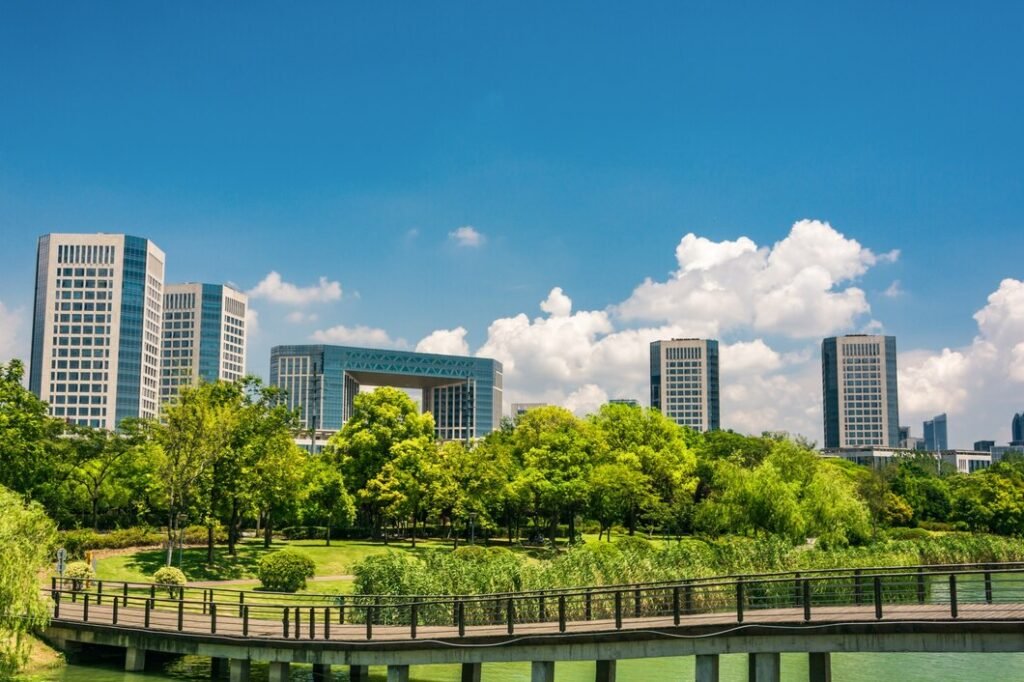
What is a Net-Zero Energy Building? Key Features and Benefits Explained
Net-zero energy buildings are changing the way we think about homes and offices. But what exactly is a net-zero energy building? In simple words, it is a building that produces as much energy as it uses in a year. This means the total energy used for heating, cooling, lighting, and appliances is balanced by energy produced from renewable sources like solar or wind.
Net-zero energy buildings (also called net zero buildings or zero energy buildings) are not just good for the environment—they can save money and improve comfort too.
1. What is a Net-Zero Energy Building?
A net-zero energy building is designed to be highly energy-efficient and generate its own renewable energy. The goal is to make the building’s energy consumption equal to the energy it produces over a year.
Key points:
Uses energy-efficient design and technology
Generates clean energy on-site (solar panels, wind turbines, etc.)
Reduces carbon footprint
Can sometimes feed extra energy back to the grid
In simple terms, a net-zero energy building can operate without relying heavily on outside energy sources.
2. Types of Net-Zero Energy Buildings
There are different types of net-zero energy buildings depending on how they generate and use energy:
Net-Zero Site Energy Building: Produces as much energy as it consumes on-site.
Net-Zero Source Energy Building: Produces energy equal to the total energy consumed, including energy lost during generation and transmission.
Net-Zero Energy Cost Building: Energy bills are zero or very low because renewable energy offsets costs.
Net-Zero Emissions Building: Focuses on balancing greenhouse gas emissions, sometimes with offsets.
3. Key Features of Net-Zero Energy Buildings
To achieve net-zero energy, these buildings have unique features:
Energy-Efficient Design: Proper insulation, airtight windows, and optimized building orientation.
Renewable Energy Systems: Solar panels, wind turbines, or geothermal systems generate clean energy.
Smart Lighting and Appliances: LED lights, energy-efficient appliances, and smart devices reduce consumption.
Advanced HVAC Systems: Efficient heating, cooling, and ventilation systems save energy.
Water Efficiency: Low-flow fixtures, rainwater harvesting, and water recycling.
Building Automation: Sensors, timers, and smart controls to optimize energy use.
4. Benefits of Net-Zero Energy Buildings
Energy Savings: Lower electricity bills by producing your own energy.
Environmental Impact: Reduces greenhouse gas emissions and reliance on fossil fuels.
Comfort: Better indoor air quality, temperature control, and natural lighting.
Sustainability: Long-term solution for eco-friendly construction.
Property Value: Zero energy buildings often have higher resale value.
Government Incentives: Many countries offer tax credits or subsidies for net-zero buildings.
5. Net-Zero Energy Buildings vs Traditional Buildings
Feature
- Energy Consumption
- Energy Production
- Carbon Footprint
- Long-Term Costs
- Comfort
Traditional Building
- High
- None
- High
- Higher bills
- Moderate
Net-Zero Energy Building
- Low, optimized
- Renewable energy on-site
- Very Low
- Savings over time
- High
6. How to Make a Net-Zero Energy Building
Steps to create a zero energy building:
Plan Efficiently: Use energy modeling during design.
Choose Materials Wisely: Insulated walls, windows, and roofs.
Install Renewable Energy: Solar panels are the most common.
Use Smart Technology: Automated lighting, heating, and cooling.
Monitor Energy Use: Track consumption to maintain net-zero performance.
7. Challenges in Net-Zero Energy Buildings
High Initial Cost: Renewable energy systems and smart tech can be expensive.
Space for Solar Panels: Large rooftops or open areas are needed.
Energy Storage: Batteries for storing energy add cost and complexity.
Maintenance: Solar panels, HVAC systems, and sensors need upkeep.
Despite these challenges, the long-term benefits usually outweigh the costs.
8. Real-Life Examples of Net-Zero Energy Buildings
- The Bullitt Center, USA: Called the greenest commercial building in the world.
- The Edge, Amsterdam: Offices with smart energy management and solar panels.
- Zero Energy House, India: Residential examples showing local feasibility.
9. Future of Net-Zero Energy Buildings
With growing awareness of climate change and energy costs, net-zero energy buildings are becoming more popular. Governments are promoting net-zero standards, and technology is making renewable energy and energy-efficient design more affordable.
Conclusion
Net-zero energy buildings are the future of sustainable construction. They reduce energy costs, protect the environment, and provide comfortable living spaces. By understanding the key features and benefits of net-zero energy buildings, homeowners, architects, and businesses can make smarter choices for a sustainable future.
Remember: Whether you call it a net zero building, net-zero energy, or a zero energy building, the goal is the same—creating buildings that balance energy use with clean energy production.
For expert guidance and design, Architecture Consultant is Dehradun’s best Architect, helping you create modern, energy-efficient, and sustainable buildings.
